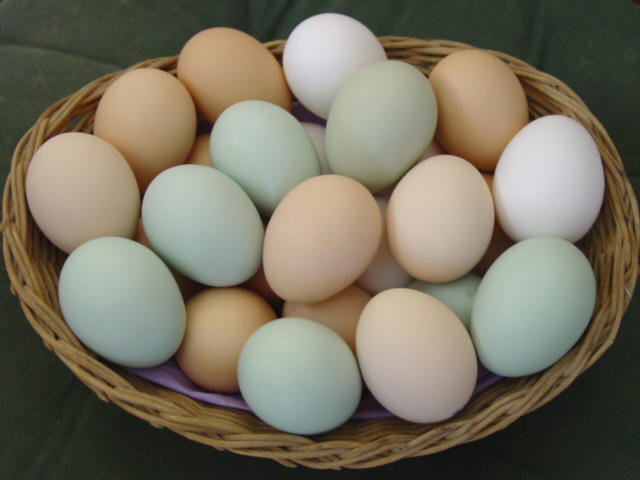Although the average egg looks innocent enough, it can harbor dangerous foodborne bacteria called Salmonella. But how do the bacteria get in there?
The bacteria, Salmonella enteritidis (also referred to as S. enteritidis), can invade an egg in several ways. One way is by the contamination of egg shells with fecal matter. The bacteria are present in the intestines and feces of infected humans and animals, including chickens, and can be passed to the eggs when chickens sit on them.
Stringent cleaning and inspecting procedures of shells were implemented in the 1970s to decrease this form of contamination, according to the U.S. Department of Agriculture’s Food Safety and Inspection Service (FSIS).
Meanwhile, scientists are working on new technologies to make eggs even safer. Effective salmonella vaccines for chickens are available and already in use in Europe. And Keener’s group is working on a rapid-cooling technique that uses liquid carbon dioxide to bring eggs down to 45 degrees F within five minutes. At that temperature, salmonella can’t multiply.
For now, consumers can protect themselves by checking for broken eggs before buying cartons at the store, refrigerating eggs promptly and cooking eggs well. For vulnerable groups, such as the very young, the very old those with immune problems, pasteurized eggs are best.
Although the average egg looks innocent enough, it can harbor dangerous foodborne bacteria called Salmonella. But how do the bacteria get in there?
The bacteria, Salmonella enteritidis (also referred to as S. enteritidis), can invade an egg in several ways. One way is by the contamination of egg shells with fecal matter. The bacteria are present in the intestines and feces of infected humans and animals, including chickens, and can be passed to the eggs when chickens sit on them.
Stringent cleaning and inspecting procedures of shells were implemented in the 1970s to decrease this form of contamination, according to the U.S. Department of Agriculture’s Food Safety and Inspection Service (FSIS).
Meanwhile, scientists are working on new technologies to make eggs even safer. Effective salmonella vaccines for chickens are available and already in use in Europe. And Keener’s group is working on a rapid-cooling technique that uses liquid carbon dioxide to bring eggs down to 45 degrees F within five minutes. At that temperature, salmonella can’t multiply.
For now, consumers can protect themselves by checking for broken eggs before buying cartons at the store, refrigerating eggs promptly and cooking eggs well. For vulnerable groups, such as the very young, the very old those with immune problems, pasteurized eggs are best.
Although the average egg looks innocent enough, it can harbor dangerous foodborne bacteria called Salmonella. But how do the bacteria get in there?
The bacteria, Salmonella enteritidis (also referred to as S. enteritidis), can invade an egg in several ways. One way is by the contamination of egg shells with fecal matter. The bacteria are present in the intestines and feces of infected humans and animals, including chickens, and can be passed to the eggs when chickens sit on them.
Stringent cleaning and inspecting procedures of shells were implemented in the 1970s to decrease this form of contamination, according to the U.S. Department of Agriculture’s Food Safety and Inspection Service (FSIS).
Meanwhile, scientists are working on new technologies to make eggs even safer. Effective salmonella vaccines for chickens are available and already in use in Europe. And Keener’s group is working on a rapid-cooling technique that uses liquid carbon dioxide to bring eggs down to 45 degrees F within five minutes. At that temperature, salmonella can’t multiply.
For now, consumers can protect themselves by checking for broken eggs before buying cartons at the store, refrigerating eggs promptly and cooking eggs well. For vulnerable groups, such as the very young, the very old those with immune problems, pasteurized eggs are best.






